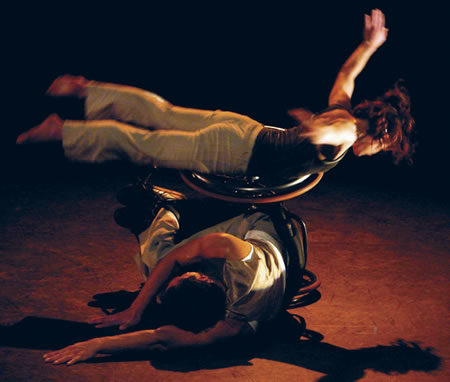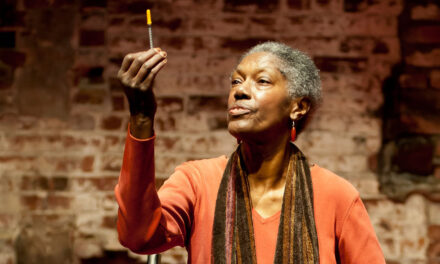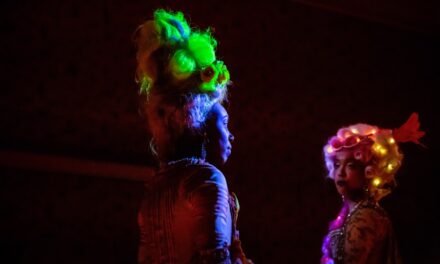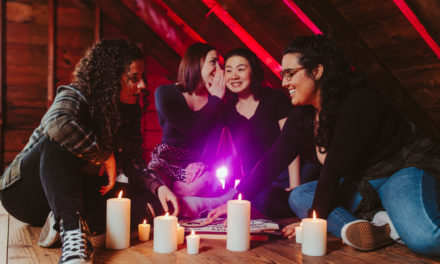In its simplest form, theatre is storytelling. From theatre professionals and academics to audience members seeing live theatre for the first time, all share the pleasure of being part of a story, whether by viewing it, participating in its creation, or analyzing it. Stories connect us, and theatre is the most versatile form by which to achieve this connection, so it should be second nature for the stories it produces to be as varied and complex as the people it represents. Historically, this has not been the case; over time, however, change has come, and theatre has made significant and important advances. But there persists considerable group exclusion, which is surprising given how theatre strives to be open-minded and has launched a variety of movements.
The group first forced to put their bodies on display, and then pushed to the side, and now criticized for those bodies are individuals with disabilities, who make up 19 percent of America’s population. This means that one in five people have some sort of disability, making us the largest minority in the United States. While the thought of exclusion in a politically fraught time such as this can be terrifying, it must be critically explored if there is any hope for inclusion. It is true that there has been an increase in acting companies, theaters, and playwrights beginning to view disability as a valuable asset to the theatre world, but they are still in the minority, and not all have intentions that benefit the very people they are trying to represent. If individuals with disabilities were able to participate fully in the world of theatre without being subjected to negative portrayals and stigmas, the theatre and the art of performance would be positively reimagined to showcase the experiences and talents of the disabled community and thereby be a societal model for change and inclusion for the same community and, eventually, other marginalized groups.
Addressing society’s treatment of disability is the first key to unlocking the reasoning behind the slow advancement of inclusion. Disability theory has produced two models of how society views disability: the social model and the medical model. The social model claims that society causes disability ideologically by adhering to the needs of the able-bodied and ignoring the needs of the disabled. Therefore, no one is disabled because of medical issues but because society deems it so. This idea is reinforced in Emma Maclean’s article “Freak, Out! Disability Representation in Theatre,” which claims that society accepts disabled individuals conditionally and that “there are times, places and situations where disabled people are allowed to exist” (10).
The medical model is used both by those who are able-bodied and those who are not; it is based on the notion that disability is an impairment or limitation that must be fixed or cured in some way so that normalcy can be achieved. This model is where common misconceptions and stereotypes come from and where ableism begins, all of which have become problems in themselves as society perpetuates them.

Medical model |Photo Credits Pixabay
One of the more well-known stereotypes subscribed to by both the average person and the media is that those with any form of disability are “inspiration porn;” they exist merely to make those without a disability feel better about their own lives. Another part of this lies in the fact that society glorifies as exemplary a disabled person’s doing something other than sitting in their house and ruminating on their struggles. While many think that calling a person with a disability “inspiring”—even though whatever they’re participating in would be normal for an able-bodied person in the same situation—will give that person confidence, will enhance their self-esteem, or is just a “nice” thing to do, it’s harmful. Bringing attention to the situation actually calls out the disability, implying that it’s the disability that matters rather than the person. It also suggests that someone is automatically special if they have a disability, no matter what they’ve achieved or their morality and value systems. These are inherently human characteristics for which we should all be judged, rather than our physical or mental state.
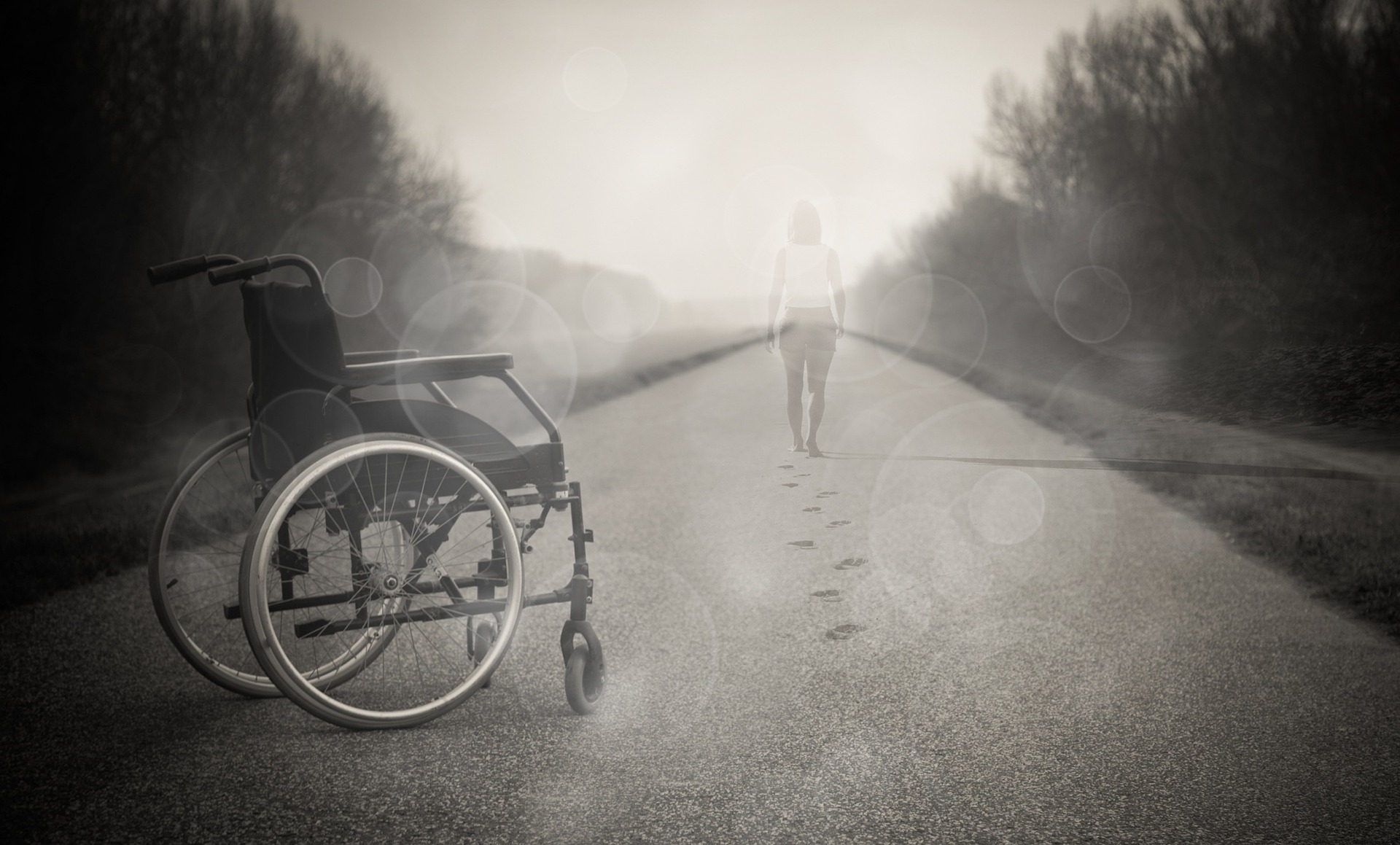
A classic example of inspiration porn |Photo Credits Pixabay
Appearance plays an important role in maintaining stereotypes under the social model: it’s the first aspect of anyone or anything we notice. The greatest misconceptions that come from this ideology are those which take into account only the surface of a person, and given society’s unhealthy obsession with body image and looks, it, unfortunately, makes sense that those with disabilities and without are forced into us/them dichotomy. This creates a consistent divide that only deepens with time and generates misinformation about the lives of those with disabilities.
Many believe that people who are disabled must live a completely different life from those who are not. While we must obviously take part in the physiological and safety facets of the hierarchy of needs, according to a society we can’t experience esteem, self-actualization, love, or the epitome of physical pleasure, sex. Sex is taboo to even talk about in terms of straight, white heteronormativity, let alone in relation to disability. Asexuality is automatically prescribed based on the shapes of bodies, which, if deemed contrary to normalcy, are assumed to be undesirable. In turn, it is also assumed that all people find those with disabilities to be romantically undesirable. This long history does not consider accounts of the disabled themselves. One of the many reasons for these beliefs is that we live in a sex-negative society, where sex happens behind closed doors with the lights off, and no one is open to talking about it in a constructive and open way; even the sex education our children get is uncomprehensive. In the media, sexuality is prevalent, but it is heteronormative and usually between two able-bodied, unrealistically proportioned people. Any deviation from this norm is deemed not “normal” enough to be shown. In a sex-positive society, an open-minded attitude toward and understanding of all sexual forms would follow. The inclusion of an open discussion on disability and sexuality would need to be a part of this, and once there is acknowledgement of different types of experiences, disabled individuals can be better seen for the diverse human beings they are, sexually and otherwise. Sex-positivity could be the first step toward subverting society’s exclusion of disability outside of inspiration and thus recognizing the creativity and education that those with disabilities can offer.
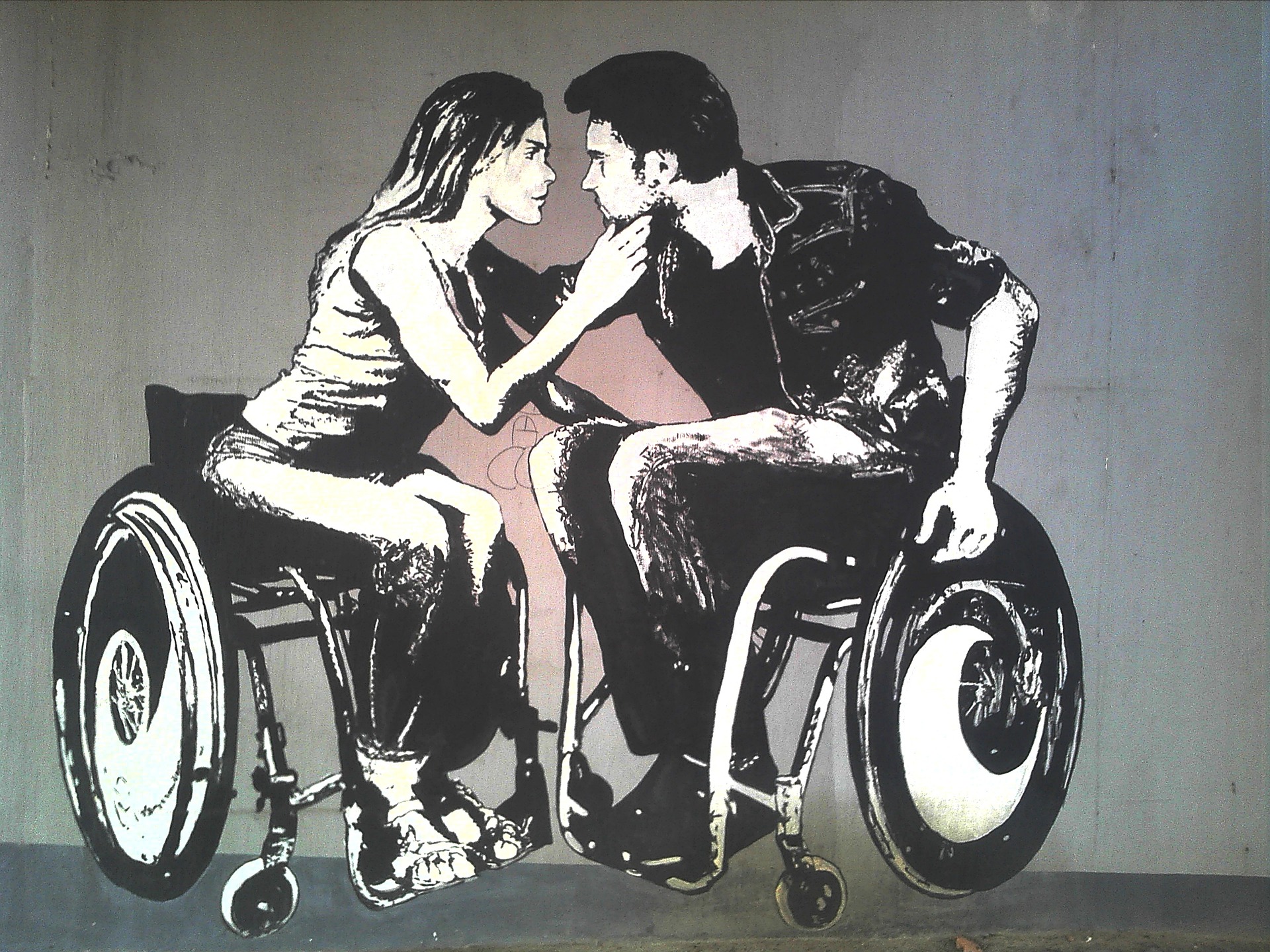
Photo Credits Pixabay
These two misconceptions are a small percentage of what society actually perpetuates, but they are the most destructive, as all other stereotypes descend from them. They are also dangerous in that the more they are accepted as the truth, the easier it is to see someone with a disability as an object, which leads to dehumanization and the violation of human rights. This is something we already see, like when a caregiver purposefully harms their client for what they cannot control. A call for change is more than something the disabled community wants: it’s essential, and it begins with representation. We must be included in all facets of society, and because no one else will represent us in an accurate or diverse way, our only option is to take charge to get the inclusion we deserve. What better start for us than in the theatre?
For one, theatre has already utilized disability in the past, and even now one can see minimal traces of disability manifested in story, character, and/or rhetoric. However, these traces merely reinforce the same stereotypes and misconceptions we want diminished and, again, either objectify or focus on trying to cure a disabled person, their main message being that disability must be fixed for the person to be whole. Aside from this, it is also common to see able-bodied characters ruling over disabled characters, which minimizes any personhood or independence the playwright could have shown. The problem with this is that audiences are seeing disability through one lens only, when even one disability out of many has thousands of perspectives to draw from. Not using these many experiences boils disability down to one continual story about overcoming barriers and being fixed, and it makes us see the disability before the person, rather than the person. Jeffrey Preston argues that these stories are “being developed with disabled characters [that] are crafted by individuals who are nondisabled, and, as such, create stories and characters based on what they think it would be like to be disabled—a perception that is informed by the fantasy of disability” (10).
Inclusivity must begin with stories. It’s time to return to the drawing board and ensure that playwrights who create stories about disability do so in a way that celebrates the characters and doesn’t reduce them to stereotypes. This should begin with disabled writers. Once their different plays are written, produced, and performed, they will become models for how able-bodied playwrights should approach disability in terms of story and character. To be clear, the creation of a formula for disability in theatre is not what I am advocating. Rather, I advocate for creating theatre that addresses disability in some form or another (it could be as simple as having a disabled character whose disability is never even mentioned) by those who actually have experienced disability; nondisabled playwrights who want to include the topic in their own work can observe and learn how to go about it in a way that benefits those they are trying to represent. There should be no opposition to able-bodied playwrights writing about disability, but the playwright and a dramaturg should conduct considerable research first. A tremendous amount of insight would be gained by having a disabled dramaturg at this stage. Having a dramaturg who is disabled on the production team of a show that has anything to do with a disability could be an enormous asset not to only the playwright but to the cast and crew (especially the director) as well. By learning from each other, we can have more inclusion and create a more productive theatre.
Not only are the stories told about disability on stage problematic, but the actors who play the disabled characters are also controversial. Rarely are disabled actors cast to play disabled characters; nor are they cast to play characters who aren’t specified as able-bodied. Not only does this constitute inaccurate acting, but it assumes that disabled people can’t act and are insufficiently worthy to be on stage. Again, opposition to able-bodied actors donning the role of disabled characters is unwarranted. Like the implementation of disabled playwrights, the first step is to put disabled actors in disabled roles and in non-disabled roles. This serves three purposes. First, it brings inclusion to the forefront. The literal act of seeing a disabled actor playing a character represents putting disabled individuals in leadership positions; not because of their disability, but because they’re capable. The argument that they would essentially be playing themselves is irrelevant; all have different experiences, and acting is how those experiences are explored and dealt with. Second, having a disabled actor play a non-disabled character is the only way to “normalize” disability on stage. Instead of focusing on the disability, what the character must overcome, or how they deal with their life, we will be able to see past their disability and evaluate them as we do any able-bodied character—through their objectives, obstacles, and characteristics. The third purpose, and the most important is that having disabled actors onstage in all roles makes room for many learning experiences. Able-bodied actors can learn new acting techniques and how to manipulate certain parts of their bodies that they’ve never used before. Designers can find new ways to craft theatrical spaces, lights, and sounds that allow for better space manipulation for actors with a range of abilities. Directors will seek out blocking techniques that use open space and that most benefit all types of mobility devices. Keeping an open mind about access can only lead to new possibilities that benefit an entire theatre and the audiences it brings in. This final purpose leads to the second step. After disabled actors have set an example through their portrayals of both character types, exploration of able-bodied actors playing specified disabled characters can begin. Similar to the playwright integration, this requires research on the parts of the actor and a dramaturg. Having a disabled person in the rehearsal room mentoring the actor one-on-one can only improve the actor’s performance. For the utmost inclusion, however, having a disabled actor play a disabled role is the better choice economically, aesthetically, and politically, and there is plenty of disabled talent in America looking for a chance to get involved.
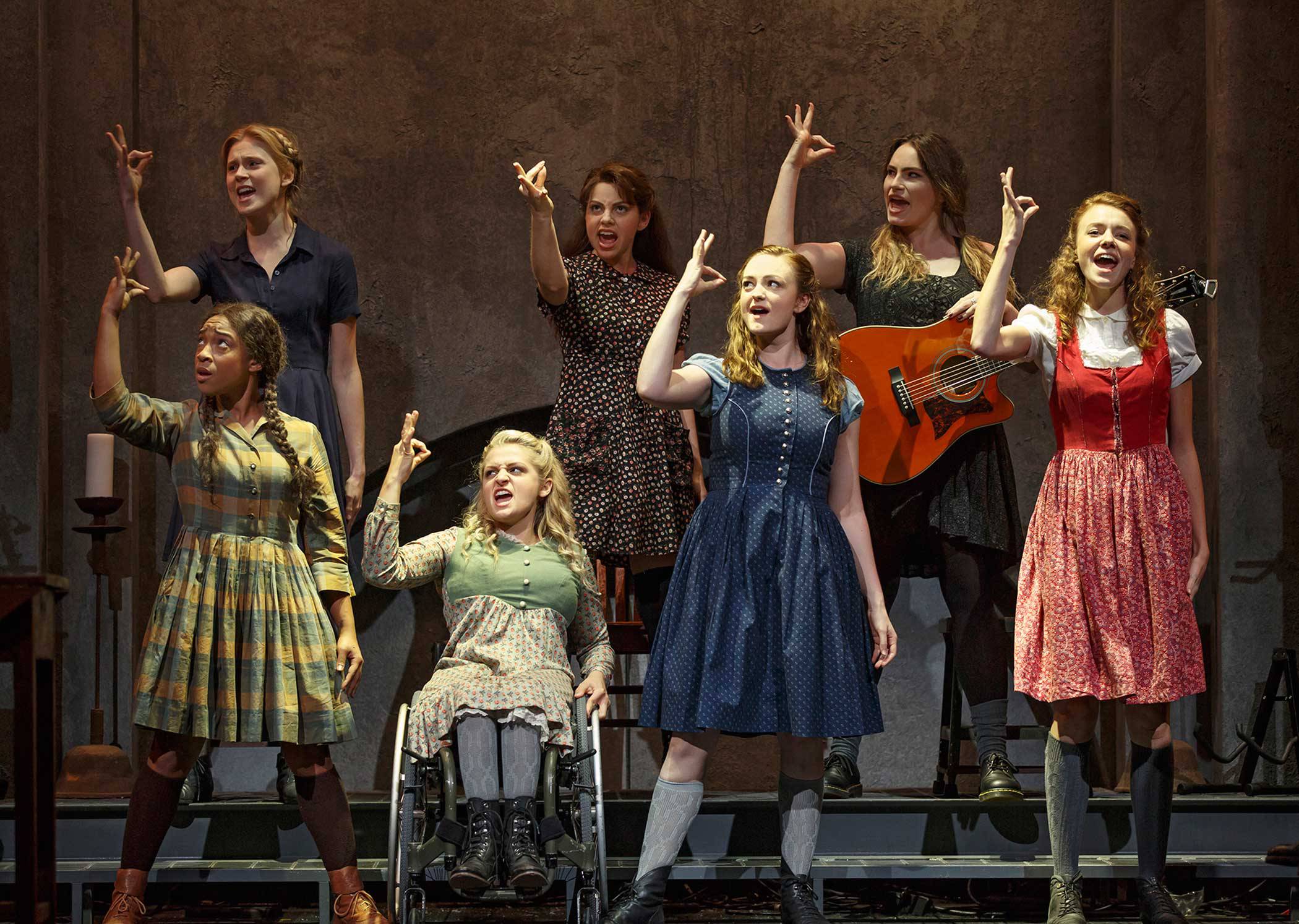
Deaf West’s Spring Awakening is an example of a production that has utilized an actress (Ali Stroker) with a disability. Press photo
Many argue that individuals with disabilities lack sufficient training and that their limitations prevent them from harnessing their talents and expressing a full range of emotion. This is untrue in some ways, but in others, the lack of training is because programs won’t accept actors with disabilities because of their perceived limitations. This double-edged sword focuses on impairment, claims Emma MacLean, “rather than [on] possible accommodations which would make it possible for [the actor] to succeed.” It would make more sense to see what the disabled actor or actress can do than to immediately shoot them down.
Performance is subjective, and having a variety of performers with disabilities across the spectrum is essential to offering more than one view of disability. If a disability is performed in thousands of different ways by thousands of different performers, we could achieve the desperate need to humanize the disabled as something other than a charity case. By seeing a myriad of experiences and the creativity and skill that disabled performers bring to the stage, we may come to “unsee” disability and instead see the person underneath as they deserve to be seen, which is when inclusion will take hold in the larger social order.
However, having a disabled individual participate fully will likely require some form of accommodation. Accommodations are basic needs for those with disabilities, and they range from having to sit down for a short break every half hour to having a personal care assistant to help with more nuanced tasks. They are an important component of disability life and would need to be implemented for all theatre workers who need them. Given the history of negative reactions to even the simplest accommodations in the workplace, we need a field where all accommodations are accepted, or the cycle of societal exclusion will only continue. Accepting accommodations and doing everything possible to ensure that those with disabilities are brought to the theatre would set an example: if we can work in the theatre as actors, technicians, administrators, directors, designers, dramaturgs, artistic directors, producers, and, most importantly, educators, we could just as easily be part of any other career field.
The disability and theatre field has grown rapidly and covers many specialized topics. However, within the topic of integrating those with disabilities into the theatre world, there has been little discourse on roles other than acting that we can take part in. Although acting provides the most visibility, literally, and figuratively, it’s equally important for individuals with disabilities to take on all other roles within the theatre. If disability is only shown on stage, total inclusion cannot be claimed, no matter how many disabled performers are involved. In addition, not every person intrigued by theatre wants to act, and respect for the interests of everyone will lead to a better understanding and an open mind, which ultimately improves theatre and, thus, society. Having disabled casting directors and directors will make it more likely that disabled actors are chosen for the roles they deserve, disabled or not. Likewise, disabled artistic directors and literary managers will choose shows that inquire into disability and all that surrounds it, so a new cycle of inclusivity can begin. Having disabled technicians and light, sound, and set designers can bring new insight to a production, and while adapting a theater to specific needs may be difficult, it must be done if any inclusion is wanted. Why begin if we’re not going to follow through to the end?
One of the simplest adaptations is the use of a remote, something many of us use to open doors. A remote can be easily rewired to operate a light fixture or to more easily use a sound system. The constant influx of new and reimagined technology makes everyday tasks easier for those with disabilities to accomplish on their own, and the same functions could be adapted to work with various technologies in the theatre. Inclusion in all facets will foster new generations of driven employees who make the theatre a more interesting and creative subset of society. This will lead to countless generations that value and seek out means for all groups, no matter how marginalized, to matter and to be a part of something powerful—the world of theatre.
What would happen if we lived in a world where people are accepted for their unique skills and talents? This could come to fruition if the theatre world were to work with disabled individuals to create and promote a better understanding of the disabled community. We must get audiences—and eventually, society—to look at the disability and the individuals who have disabilities in the way they want to be seen. This will be different for all, but to do so, we must be in control of the gaze.
Inclusivity begins with education—it destroys ignorance and replaces it with acceptance. Promoting inclusivity and ending ableism throughout society requires greater access to education. An introduction to disability can be taught as early as elementary school. Jennifer Eisenhauer calls for “disability discourse in art education . . . promot[ing] the art classroom as a site through which to critically engage issues of ableism” (20). Children are malleable; likewise, the more they talk about disability—and, even better, engage with other children and adults with disabilities—the more likely they are to see them as people and to “unsee” their disability through friendship. Ideally, colleges and universities should implement disability studies, as many with and without disabilities are unaware that this field even exists. College students should be required to take one class in the field. Taking these steps will ensure that a large part of society exits the school and university system having learned about disability in some form, so they can recognize stereotypes and ableism and understand their roots. This, in turn, will create a new society that sees disability representation first and foremost in the theatre, that has been educated enough so that disability is normalized to them, and that will thus include people with disabilities in their workplaces and personal lives, ending the various stereotypes and stigmas that we have faced and fought to overturn for so long.
We need a theatre where including people with disabilities doesn’t merely mean making the physical theater accessible, producing plays about disability, or even casting disabled actors. We need a theatre that makes every part of itself accessible, including the offices on the top floor, the light booth, the sound board, and the catwalks. We need theatre with complicated disabled characters who have the same objectives as any other character and who will go to the same means to reach them, malicious or not. We need disabled characters that we love, that we hate, and that we feel absolutely nothing for. We need plays that aren’t about disability at all but still have disabled characters in them. Finally, we need to “cast” those with disabilities in any and every role, on stage and off; for when we do, we set an example: everyone has value, and society’s rigid model needs an immense alteration.
Notes
- U.S. Census Bureau.
Works Cited
Eisenhauer, Jennifer. “Just Looking and Staring Back: Challenging Ableism through Disability Performance Art.” Studies in Art Education: A Journal of Issues and Research in Art Education 49.1 (2007): 7–22.
MacLean, Emma Toll. Freak, Out! Disability Representation in Theatre. Honors thesis, Wesleyan University, 2014. http://wesscholar.wesleyan.edu/etd_hon_theses/1309
Preston, Jeffrey M. Fantasizing Disability: Representation of Loss and Limitation in Popular Television and Film. PhD diss., The University of Western Ontario, 2014. http://ir.lib.uwo.ca/etd/2386
This post was written by the author in their personal capacity.The opinions expressed in this article are the author’s own and do not reflect the view of The Theatre Times, their staff or collaborators.
This post was written by Madison Parrotta.
The views expressed here belong to the author and do not necessarily reflect our views and opinions.

